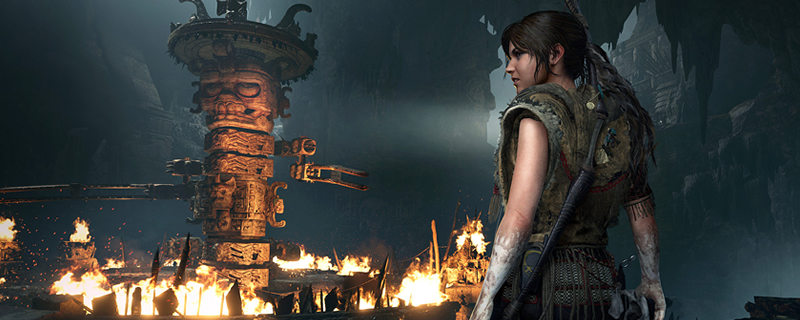Shadow of the Tomb Raider RTX Performance Review – Ray Tracing and DLSS Analysed
Conclusion
Soo, to DLSS or not to DLSS? Should I ray trace my Shadows of the Tomb Raider? RTX is here, and with it comes a lot of decisions to make. If you have read the last few pages, you should already know our thoughts on Shadow of the Tomb Raider’s use of RTX, but you’ve come here for the conclusion, so here goes.Â
 Â
Shadow of the Tomb Raider was a demanding PC game before ray traced shadows were added into the mix. Using the game’s Highest Preset, the game already dipped below 60FPS at 4K on an RTX 2080 Ti, something which will no doubt leave a lot of PC gamers confused as to why the game needed to become even more challenging to run.Â
Let’s start off with DLSS, a feature that in our eyes is way more interesting that Nixxes’ raytraced shadows. As we said before, under the game’s highest preset even the mighty RTX 2080 Ti can’t keep the game above 60FPS, a factor that makes any performance boost worth grabbing. Â
Shadow of the Tomb Raider offers the best implementation of DLSS that we have seen to date, living up to the hype surrounding the feature by creating a final image that, in many cases, looks better than the game running at a native 1440p or 4K. Yes, some areas of the image do look worse than a native rendering, but more often then not our screenshots look the same under DLSS or a little crisper. When factoring in the higher framerates that DLSS often provides, the feature is more than worth turning on at high resolutions.Â
At 1080p, the difference between DLSS on and DLSS off becomes more noticeable, with Lara’s hair and some other elements growing more blurred when the feature is enabled. Simply put, DLSS approximates extra detail using lower resolution imagery; this is how DLSS offers increased performance levels. At 1080p, it becomes hard to generate more pixel detail, as sub-1080p images are not known for their sharpness. This factor always means that DLSS won’t fully match a native resolution rendering, as DLSS cannot approximate detail that is not there, that said, DLSS does a fantastic job at 1440p and 4K. Please look at page 2 to see our DLSS on and DLSS off comparisons.Â
Moving on to ray tracing, we can see that Nixxes made every effort to make ray traced shadows less demanding, but there is no getting around the fact that adding ray tracing to an already demanding game is just going to cause performance to become worse, even with DLSS taking back some of the lost framerate. Â
At Medium settings, Nixxes tried to enhance Shadow of the Tomb Raider with minimal use of Ray Traced Shadows, allowing it only to be used on specific features to minimise its performance impact. While this is a smart move, it results in the function going by unnoticed in some sections of gameplay and prevents the accuracy of sun-cast ray-traced shadows from being seen at all.Â
At High and Ultra ray traced shadows settings things become more impressive, with accurate shadows appearing everywhere, resulting in many cases where the game’s shadow maps are replaced with something that looks more diffuse and less sharp, which some players might dislike. Even so, the impact this has on uneven terrain on in the many carved walls and statues within the game, is enormous, creating accurate shading with razor sharp shadow casts. Even so, this feature comes at a huge performance cost, which is why we’d guess that a lot of players will steer clear of it, especially at higher resolutions.Â
To finish off, Shadow of the Tomb Raider has the best implementation of DLSS that we have seen to date, in many cases offering levels of image detail that are higher than that is provided by a natively rendered image with TAA. Yes, some places can look worse, but in general, DLSS looks better, which is fantastic given the performance boost the feature offers at 1440p and 4K. We do not recommend using DLSS at 1080p, but at 1440p and 4K we have not problems recommending it.Â
When looking at Shadow of the Tomb Raider’s ray tracing, we cannot deny that the game can look a lot better when the feature is turned on, but its high-performance cost at High and Ultra makes it something that we see most PC gamers avoiding, especially at 4K. At 1440p we can see a lot of RT 2080 Ti users turning it to Ultra with DLSS enabled, but at 4K the feature is too demanding for today’s hardware. That said, Shadow of the Tomb Raider was a hard game to run without ray tracing, so this should have been expected from the start.Â
You can join the discussion on our Shadow of the Tomb Raider RTX Performance Analysis on the OC3D Forums. Â



